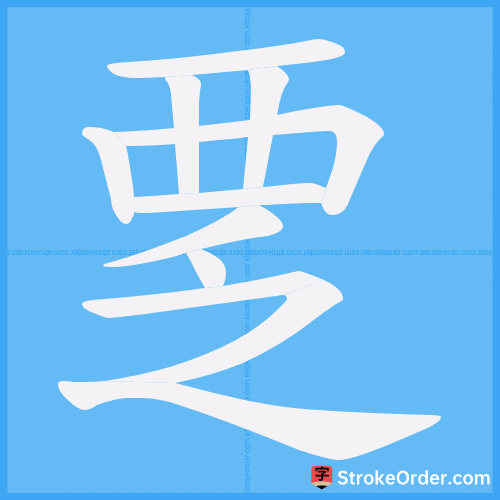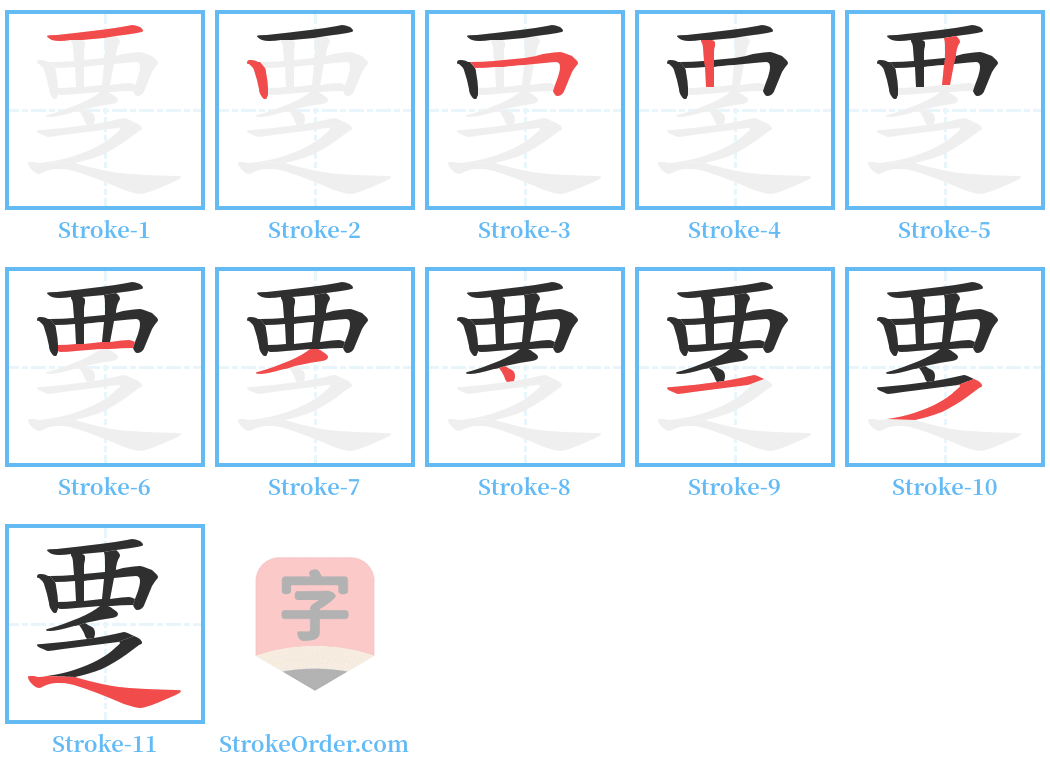覂 Stroke Order
Animated Stroke Order of 覂

Stroke Order Diagrams for 覂

Information of 覂
Pinyin
fěng
Radical
覀
Strokes
10 strokes
Usage
★★
Definition
覂 [fěng]
1. Turn over; to overturn.
Example: "翻;倾覆:“~驾之马,设衔策以驱之。”" (To turn over; to overturn: "When the carriage overturns, set the reins to drive it.")
2. To lack; to be deficient.
Example: "缺乏:“公私~竭,户口减耗。”" (Lack: "Public and private resources are exhausted, and the population is reduced.")
覂 (动)
翻 (English: turn over)
引
1. "说文": 覂, 反覆也。从西,乏声。(In "Shuowen Jiezi": 覂 means to turn over; it comes from the radical for 'west' and the phonetic component means 'to lack.')
2. "汉书·武帝纪": 泛(覂)驾之马。(In "Hanshu: Annals of Emperor Wu": An overturned carriage.)
3. "汉书·食货志": 大驾将泛(覂)。 (In "Hanshu: Treatise on Finance": The great carriage is about to be overturned.)
4. "庄子·天地": 子往矣,无乏(覂)吾事。(In "Zhuangzi": You leave, do not lack in my matters.)
5. 颜延之《赭白马赋》: 马无覂驾之佚。(In Yan Yanzhi's "Ode to the Red and White Horse": The horse does not know the joy of being overturned.)
例
又如: 覂驾 (翻车) (Also see: 覂驾, meaning to overturn a carriage.)